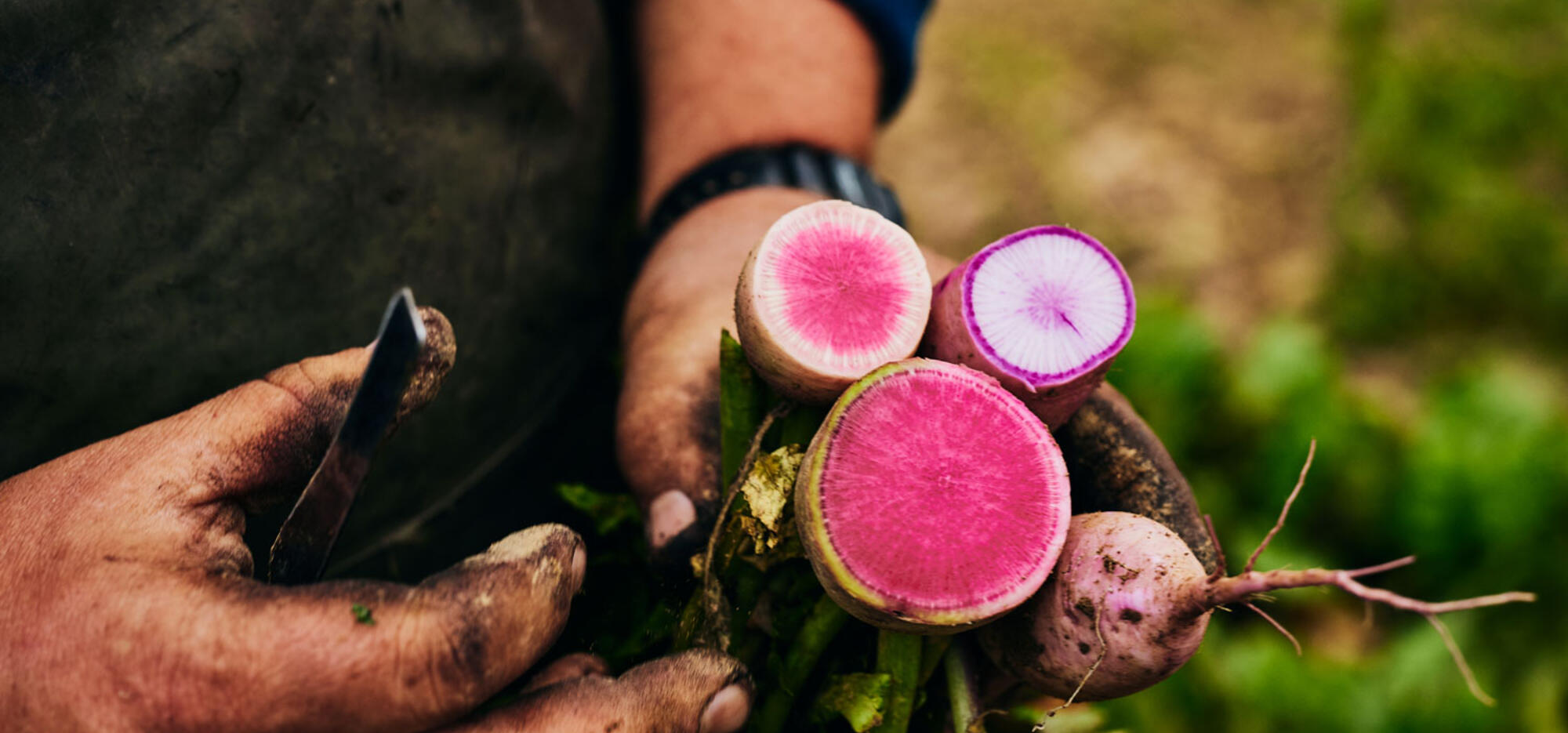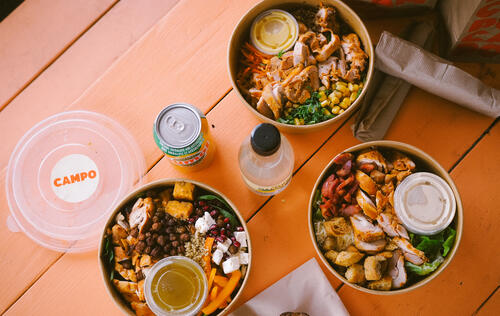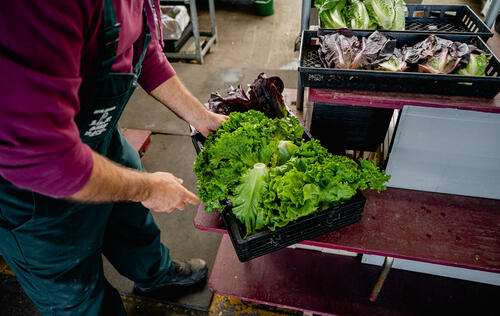(Re)discovering Quebec's winter vegetables

Quebec winter vegetables in the spotlight! Cook rutabaga, Jerusalem artichokes and parsnips for tasty, 100% local dishes. If I told you that we'd unearthed a brand new variety of deliciously sweet, affordable vegetables from a remote part of the world that can be stored for weeks or even months, I'd probably get your attention. Well, the bad news is that this incredible exotic vegetable doesn't exist. The good news is that it's already here, minus the thousands of miles we have to travel.
If the classics of our culinary folklore have perhaps led us to put aside these vegetables cooked daily by our ancestors, this article should undoubtedly inspire you to give them a place of choice on your winter menu.
Vegetables that are often underestimated
Available from October to March, and even all year round if you know which shop to visit, winter vegetables are perfect for improvising meals that are just as tasty as those you'd get with vegetables from far away. At just a few pennies a pound, adding winter vegetables to your menu will see your family's grocery bill melt away as quickly as the snow in early November. With the wide variety of winter vegetables available, you'll have plenty of winter to explore in the kitchen!
A few varieties that deserve a closer look
Some of these often overlooked vegetables have great potential as simple-to-prepare comfort meals.
- Beetroot: colourful, sweet and delicious, it can be prepared in many different ways and will add a colourful touch to your meals. Simply roast beetroot on a tray in the oven, add some to your bourguignon, grate a small amount into your next homemade brownie or simmer some beetroot with citrus fruit. Seduction guaranteed... with a few spots!
- Topinambour: This ginger-like root vegetable is often little-known because it's not often seen on the shelves, but it's delicious nonetheless. You'll love its creamy texture and nutty flavour. Its thin, edible skin and juicy, crunchy, sweet flesh make it a perfect candidate for eating raw or cooked. Cooked, it is delicious in purées, soups, oven roasts or au gratin.
- Turnip: Not to be confused with the rutabaga more commonly found on the shelves, the turnip is generally smaller and more colourful, with a lovely mauve hue and a very white base. Here, maple syrup and cream are the order of the day! Maple turnip soup, stew, purée and reinvented raw vegetable platter. I dare you not to devour half of it before you've even finished preparing it!
- Cabbage: far from being limited to cabbage soup, cabbage has many uses. When lacto-fermented, you'll discover a completely different sauerkraut to the white vinegar preparation often found in shops. Try it simply grilled in the oven in thick slices, in a casserole with various other winter vegetables, braised or simply sautéed!
COOKING tips for vegetables at their best
Winter vegetables may seem difficult to cook with their strange shapes and tough skins, but you'll find that they're as easy to prepare as a slice of cucumber with salt.
Time-saving cooking techniques
- Discover winter vegetables in their simplest form: simply raw on a raw vegetable platter! With the exception of beetroot, which should be blanched beforehand, you'll discover new flavours and take your raw vegetable platter to a whole new level!
- To save time and avoid stains on your hands, get into the habit of cooking them with the peel on. Many of these vegetables, including smaller beetroot, parsnips and even some squash, are very good with the skin on.
- Boiling used to be the method of choice for cooking large quantities quickly and efficiently. Nowadays, we tend to grill or roast in the oven, puree to garnish our plates, make delicious soups and explore lacto-fermentation. Braised, simmered, sautéed and oven-roasted beetroot? You bet!
Bonus: unexpected flavour combinations
- Local sugars are a perfect match for the mild, often sweet flavours of winter vegetables. A touch of honey or maple syrup will give your next root vegetable casserole a cosy, woolly feel!
- Calories be damned! Butter, oil and full-fat cheeses are your best bet for a perfect meal. Oven-roasted beetroot and squash topped with a knob of sage butter or goat's cheese should guarantee you a 15/10 score at your next meal. Crunchy walnuts, full-fat yoghurts, cream, sour cream and cold meats will also add a healthy dose of love to this winter vegetable meal.
- Fruit is another great addition to winter vegetable dishes. Cranberries, apples, pears and citrus fruits are delicious additions to your next festive stew.
With so many delicious and tasty options, low cost and long shelf life, you've got everything you need to get to grips with these vegetables by the roots.
Photo by Daphné Caron
This article was written by Édith Ouellet, a nutritionist by profession, who believes that healthy eating and sustainable eating go hand in hand. With her very own 0% guilt-tripping style, she tries to influence people to adopt eating habits that are not only healthier but also more respectful of the planet's health. Édith is offering a brand new course to support you in your efforts to eat locally all year round. With recipes, tips, tricks and answers to all your questions, you'll learn the essentials for becoming a true locavore... even in Quebec!
This project was funded by the Proximité Program, implemented under the Canadian Agricultural Partnership, in accordance with an agreement between the governments of Canada and Quebec.





